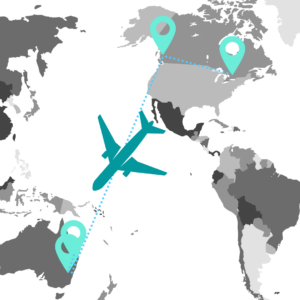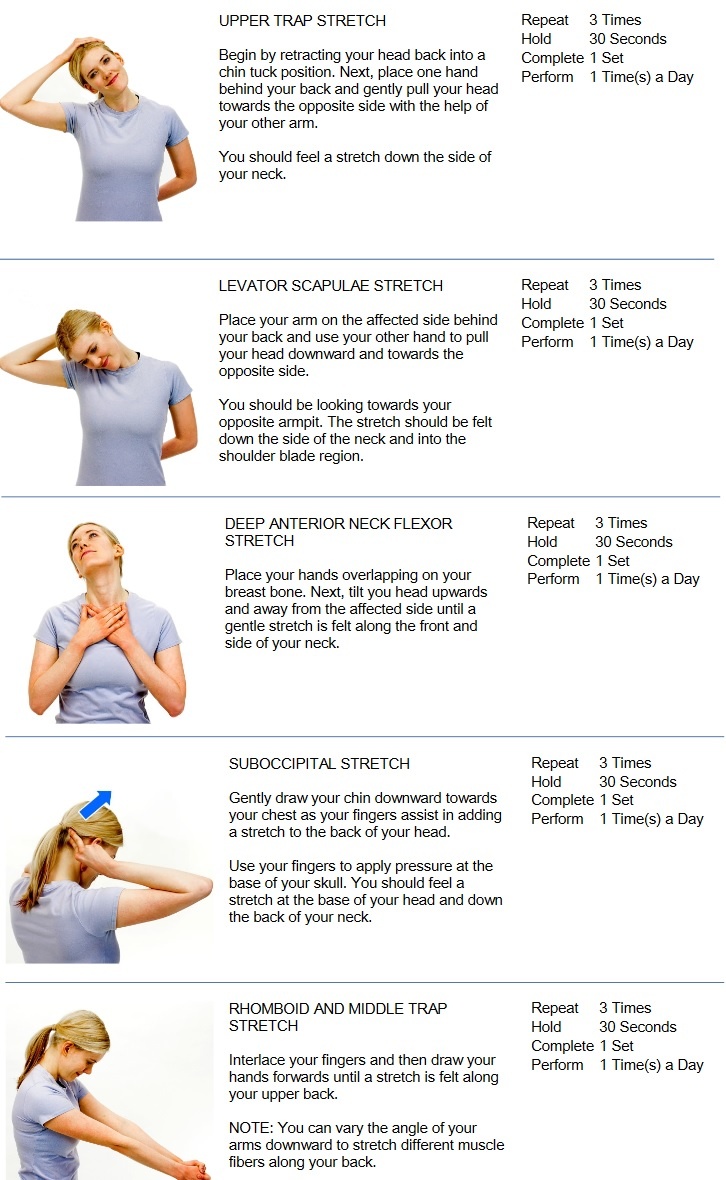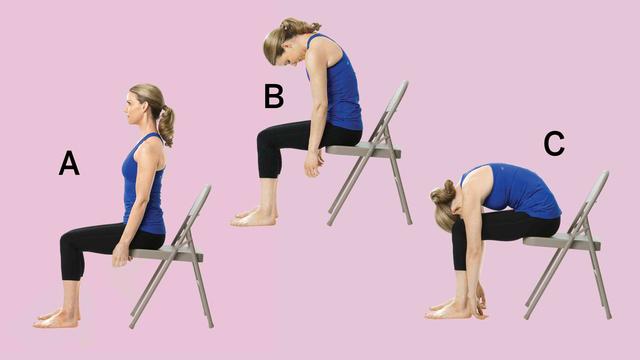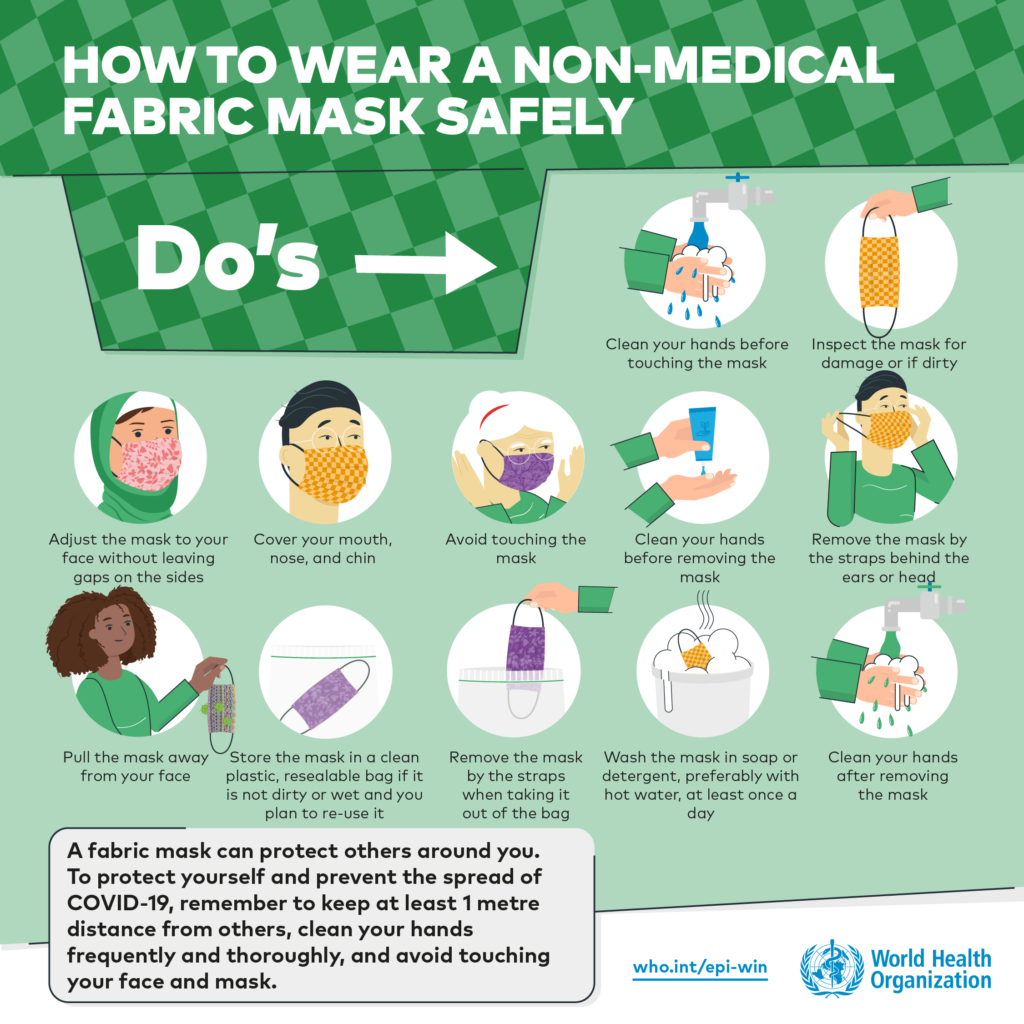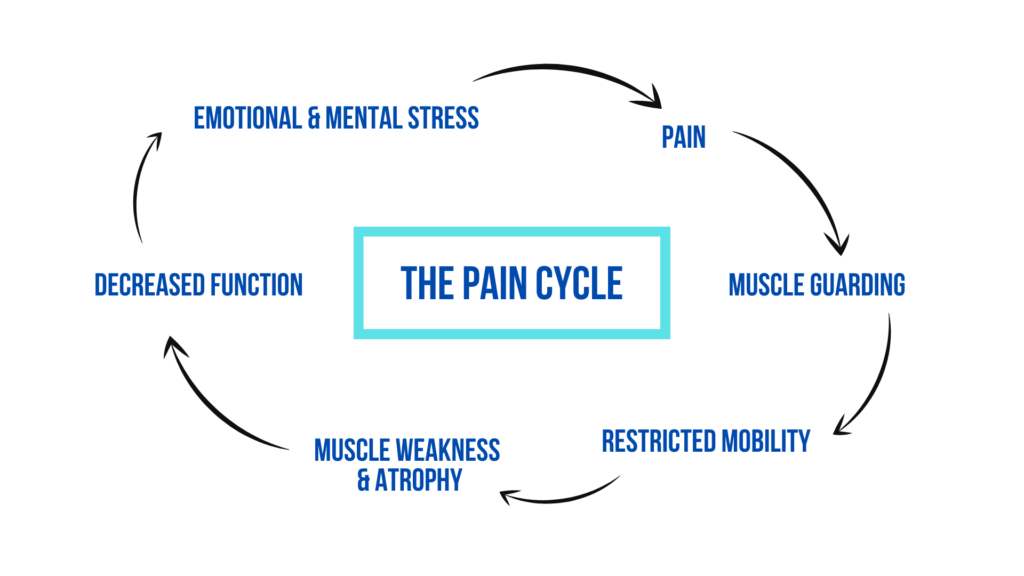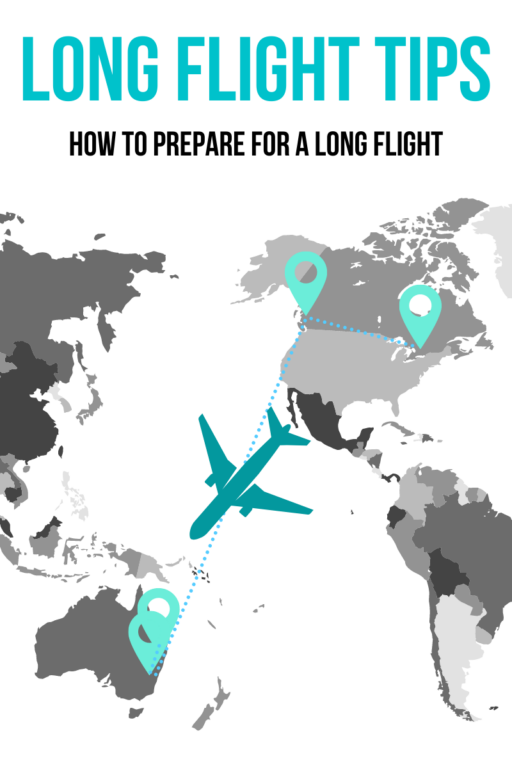
How to prepare for a long flight
Long haul flights were daunting before COVID-19, but now that the world is opening up again (ish) sitting in an airplane with hundreds of other people for 10+ hours can seem even more concerning. Whether it is your first flight post-covid, or your very first long flight all together, it’s normal to have lots of questions. What to do on a long flight? How to prepare for a long flight?How many snacks can I fit in my carry on? How to sit for a long time without neck pain? What are some long flight tips?
I am about to travel 33 hours from Toronto to the Eastern Coast of Australia, and I had these questions too. The longest flight I’ve been on was 8 hours to Scotland, so I had no idea what to expect. Am I allowed to bring my own snacks or do I have to buy it all at the airport? How long do we really think I can nap on a plane? But most importantly for me, was how do I prevent muscle aches and a stiff neck after sitting for that long?
Naturally, I turned to my trusted team of physiotherapists for advice.
How to avoid back pain during a long-haul flight
How do I survive a long haul flight in economy class?
Don’t sit still
The pandemic has shown us all that working from home in front of a computer for so many hours straight does not do our body any favours. Needless to say, sitting still on a long flight is not going to be fun either. Move around in your seat as much as you can, and get up for a standing stretch or walk down the aisle.
Circulation
Have you ever had your leg fall asleep while sitting for too long? It sucks! Following our first tip of not sitting still will help keep your blood flowing and prevent you from cutting off your circulation from being in one position.
Walk it out
Walking gets your heart rate up, let’s your muscles move around, plus it will give you a change of scenery. Even though that scenery will just be different people’s faces. Think of it as a new kind of people watching. What are the people on the other side of the plane doing? Maybe you’ll make a new friend.
Take advantage of layovers
Long layover? Don’t spend it by sitting some more! Get some laps in around the terminal. Do some window shopping. If the airport has showers, enjoy a nice warm shower. The hot water will help relax your muscles, plus who doesn’t love feeling fresh and clean after spending hours in a plane?
Frequently change postures/positions
The best posture is one that is constantly changing. While there may not be a lot of options if you’re crammed between two strangers, try as much as you can to regularly adjust the way you are sitting.
Stretch
Stretch your neck out, roll those shoulders, extend the ankles! Stretching and keeping body parts moving will help improve blood flow, release tension, and keep you more comfortable. Here are a couple basic stretches to keep in mind:
Neck stretches, from Active Chiropractic:
One of my personal favourites, rolling down into a blob:
Hydration
Dehydration can cause muscle cramps, muscle spasms, stomach cramps, and decreased blood volume. None of which will make your long haul flight more pleasurable. Less water in your body changes your pH, which creates a chemical imbalance. This imbalance is what can cause muscle cramping or contracting. It is also common that travelers find the climate inside an airplane to be quite dry, so you want to keep hydration top of mind.
Plus, having to make the trip down the aisle to the bathroom is just another opportunity to stretch your legs – it’s a win-win!
Compression socks
This is a recommendation from one of our RMT’s, Stacey. She relies on compression socks during her long flights to help with circulation through her calves and feet, and to help prevent any possible swelling of your feet.
Neck pillow
As someone who loves to nap (regardless of situation), a neck pillow is a must. Sleeping while sitting up is quite the challenge for a lot of people, and it can be terribly uncomfortable when you wake up with a sore neck. Using a neck pillow allows you to lean your head in whichever direction you choose while still keeping it propped up. This keeps your airway open, stops your neck muscles from overstretching, and makes your nap much more comfortable.
Hot tip: try flipping your neck pillow around to see if it is more comfortable with the opening facing the back of your neck or the front of your neck.
Lumbar pillow heated blanket – use like a hot pack
On some airplanes you have access to a full power outlet in the arm of your seat. Not only does this mean endless charging opportunities for your smart devices, but you could bring a heated blanket! A great option for those who find airplanes cold, but an even greater option for any muscle pain. Fold or roll the blanket up and use it as a heated lumbar pillow!
Eye Mask
Some people need absolute darkness in order to sleep. If you need darkness to sleep, or you are a lighter sleeper, I definitely recommend an eye mask of some kind. It will help allow you to get some much needed rest on the plane without the disruptions of cabin lights and windows. This is especially helpful if you are trying to change your sleep pattern for a different time zone.
Comfortable covid mask
If you are about to sit on a plane for hours on end, you definitely don’t want to be fighting with your mask the entire trip. We all have that one mask by now that is our least favourite. The nose piece doesn’t seal well, the ear loops are too tight or too loose, it doesn’t stay on your face very long… after nearly two years into this pandemic we have all experienced it. Make sure you bring multiple clean, comfortable masks for your trip.
Comfortable masks aside, you need to ensure your mask is doing its job correctly for the entire duration of your trip. Here are some mask guidelines you should follow to keep your risk of illness down:
- Make sure the mask completely covers your nose and mouth
- It should fit snugly around your face, and not have any gaps between the edge of your mask and your skin.
- Have a nose wire at the top to secure the mask to the shape of your nose. This also helps those of us who wear glasses… if it is securely around your nose, your glasses won’t fog up!
- Your mask should have a MINIMUM of two layers of fabric. Three is considered ideal.
- Remember that a scarf is not a substitute for a mask. During these cold winter months, wear your scarf over top of your mask, not instead of.
- Safely discard your mask and replace it with a clean one if it becomes soiled, someone coughs on you, or it becomes hard to breathe. You should not touch your mask once it is on.
From Public Health Ontario:
- “Persons wearing a mask must also practice physical distancing of at least two metres (six feet).
- Masks are to be discarded if visibly soiled, damp, damaged or difficult to breathe through, and after removal.
- After use, masks are to be handled in a manner that minimizes the potential for cross-contamination.
- Universal masking is one of many control measures that work together to prevent the spread of infection. Other measures include vaccination, screening, ventilation, hand hygiene, physical distancing and environmental cleaning”
Use the bathroom
Some people try to avoid using the bathroom during flights, but for long flights it’s inevitable. If you are following the above tips and drinking enough water, you will have to go a few times. Think of it as an extra excuse to stretch your legs! Plus the walk there and back gives you time to stretch your neck, back and arms too.
Prevent muscle guarding
Muscle guarding happens when you feel pain in a certain area. Your body responds to this by having the muscles around the painful area tense up, ready to protect whatever is in pain. As handy as this sounds, sometimes our body can be a bit dramatic and cause further issues.
To help explain this a bit further, take a look at the pain cycle below:
So the more stressed you are, the more likely you are to experience pain, which leads to a higher chance of muscle guarding, which leads to restricted mobility, weakness, and decreased function, which leads to more stress… and the cycle continues. By keeping your body moving, making sure your muscles stay hydrated, and maintaining good circulation throughout the flight, you give your body a better chance to avoid unnecessary muscle guarding.
What to do on a long flight?
Load up your Kobo
Personally, I’m a physical book person. There is something about filling endless bookshelves with the wonderful stories you’ve read that is deeply satisfying. But when you’re only allowed 7kg and a bag small enough to fit under the seat, bringing multiple books to read becomes challenging. This goes for the weight allowance of your checked baggage as well; bring all the books you want and save room for souvenirs? Sounds like a dream. Load your eReader up with as many books as you wish for less physical room than your favourite Goosebumps.
- Bonus: audio books!
Bring your charger/battery pack for your phone
Play games, listen to audio books, discover a new podcast… but only if you have precious battery life. Make sure you bring all required charging components and a battery pack (like a mophie) so you are covered.
Podcasts
Spending 15 hours by myself sounds like a great time to catch up on the latest episodes of my favourite podcasts. All caught up, need something new to listen to? Here’s what we’re listening to right now:
- Critical Role – Chelsea
- Call Her Daddy – Stacey
- Stuff You Should Know – Dawn
- 1001 Reasons to be Afraid of the Dark – Dawn & Chelsea’s own podcast!
- Rob Has A Podcast – Amanda
- The Genius Life – Paolo
Pre-download movies/episodes from Netflix
Guilt-free binge watching? Sign me up. Some streaming services like Netflix will let you download episodes/movies to your device so you can watch without relying on internet access.
Travel cards/board games
If you are flying with a friend, bring a travel sized deck of cards, or a travel sized board game! We’ve played cribbage, backgammon, euchre, etc.
Sleep and change time zones
Long flights are a great chance to try and change your sleep schedule and lessen your jet lag once you arrive at your destination. Prepare for your long flight by calculating ahead of time what time of day it is in your destination’s time throughout your flight(s) to determine when you should force yourself to stay awake, and when you should try to catch some Z’s.
If you want new sleep position ideas, check out this Washington Post article for a good chuckle.
Where are you heading for your next getaway? What are your essential carry-on items? Did I miss any? Let me know in the comments!
Safe flight, and take care!

8 Reasons Why You Have Neck Pain – And Bad Posture Isn’t One of Them
Neck pain and spinal pain are one of the most common complaints we hear about in our clinic. Symptoms and resulting functional limitations can be

How to Wear High Heels Comfortably: Are high heels bad for you?
There is nothing quite like the big smile and feeling of confidence when you put on your brand new pair of heels for the first

Back Pain Tips: How to Feel Better When You’re a Student and Have No Time
A couple weeks ago I had a student come to the clinic for pain management. Her story is a common one, and often doesn’t get
